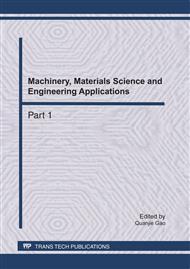p.930
p.937
p.942
p.947
p.951
p.957
p.963
p.968
p.975
Research on Dynamic Torque Control Strategy for Parallel Hybrid Electric Vehicle
Abstract:
It is necessary for Parallel Hybrid Electric Vehicle (PHEV) to distribute energy between engine and motor and to control state-switch during work. Aimed at keeping the total torque unchanging under state-switch, the dynamic torque control algorithm is put forward, which can be expressed as motor torque compensation for engine after torque pre-distribution, engine speed regulation and dynamic engine torque estimation. Taking Matlab as the platform, the vehicle control simulation model is built, based on which the fundamental control algorithm is verified by simulation testing. The results demonstrate that the dynamic control algorithm can effectively dampen torque fluctuations and ensures power transfer smoothly under various state-switches.
Info:
Periodical:
Pages:
951-956
Citation:
Online since:
April 2011
Authors:
Price:
Сopyright:
© 2011 Trans Tech Publications Ltd. All Rights Reserved
Share:
Citation:


